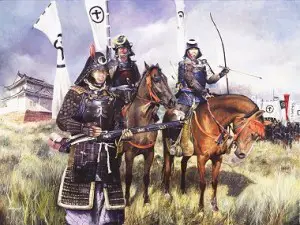In its isolation – an archipelago surrounded by water – Medieval Japan was a world seemingly bizarre but coherent, receiving external interference with difficulty. Every event entering its natural boundaries, neighbouring seas and oceans, was at first regarded with distrust, then analysed and finally assimilated in the insular national manner. No matter if it regarded religion, culture, social structure, way of fighting, economic tendency or scientific triumph, the Japanese “assimilated” innovations, transforming them according to their own sensitivity and “japannised” them to such an extent that eventually, these influences became unrecognisable.
In Japanese, the name of Japan is Dai Nippon or Nihon; Dai = “great” and Nihon or Nippon = ”origin of the sun”, hence, Land of the Rising Sun. Japan is a corrupted form of the Chinese word Riben (“the origin of the sun”). The term Nihon was officially used by the Japanese beginning with the year 670; until then the name of the country being Yamato. The Japanese called their country with different other names too, very long ones, which were in fact metaphors.
The division into periods of the Japanese history is tributary to the Japanese calendar. Its pattern follows the one formerly used in China (beginning with 140 BC), the adoption of this calendar being made by Japan during Emperor Kotoku’s rule in 645. The calendar structure uses the system of era numbers (nengo). Two or more eras form a period. The name of the period was determined, as a rule, by the name of the capital city, which was also the sovereign’s residence, and marked the beginning of a new, more important, reign.
The names of the eras were chosen depending on one of the major events in the country’s life, no matter if they were positive or negative ones. For example, an emperor’s accession to the throne, a period of prosperity, the establishment of a new reform or a natural disaster could have been valid pretexts to the name of a new era. The number of years that an era lasted varied.
The Japanese medieval epoch spans across seven centuries, beginning with the 12th century and ending with 1868. There existed a relative long historical period in which the general notion of state was very vaguely underlined. The unification of the clans and the establishment of a central Japanese government took place only in 648 during Emperor Kotoku’s rule (645-654).
According to most historians, Mediaeval Japan is divided into four periods as follows:
Period / Years
- Kamakura / 1185-1333
- Muromachi (Ashikaga) / 1333-1573
- Azuchi-Momoyama / 1573-1603
- Edo (Tokugawa) / 1603-1868
Japan comes out of the Middle Ages with the beginning of the Meiji period or the “Illuminated government” (1868-1912), marking Japan’s entrance in the Modern epoch. In 1868, the last Shogun, Tokugawa Yoshinobu, was overthrown and Emperor Meji (1867-1912) was reinstalled as the leader of the nation. As a result, the leader of the imperial forces, Saigo Takamori and the leader of the shogunal forces, Katsu Kaishu met and discussed the peaceful handing over of power.
An earlier version of this text was published in
The Spirit of Medieval Japan (Nipponica Publishing House, 1999)
Photo source


